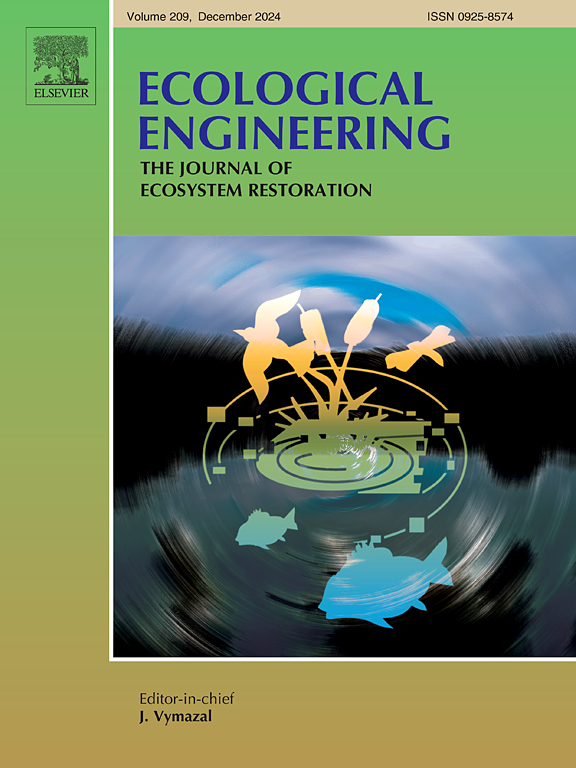Ecological restoration processes in pika mounds on the Qinghai-Tibet Plateau
IF 3.9
2区 环境科学与生态学
Q1 ECOLOGY
引用次数: 0
Abstract
Plateau pika activities affect the plant communities and soil properties by feeding, burrowing, and excretion. However, it is unclear how plant communities and soil properties in exposed mounds caused by pika activity recover. We investigated how plant species richness, vegetation biomass, and soil properties recover in pika mounds, which was formed in 2020, four years after the disturbance was ceased (2020−2023) in an alpine meadow on the Qinghai-Tibet Plateau. The results showed that 1) total carbon (TC), total nitrogen (TN), carbon nitrogen ratio (C:N), and soil water content (SWC) were significantly decreased while soil pH was significantly increased under pika mounds, whereas ammonia nitrogen and nitrate nitrogen showed no difference with control; 2) the decline in soil C:N and TN reduced grass and sedge biomass, respectively, while the increase in soil pH enhanced the forb biomass in pika mounds after 4-year recovery; 3) the decreased sedge and grass biomass outweighed the increased forb biomass, leading to the decline of aboveground biomass; the belowground biomass was also lower than ambient control after 4-year recovery; 4) although species richness increased by 22.00 % in exposed mounds after 4-year recovery, it did not recover to control level. The result suggests that neither soil properties nor plant communities in exposed mounds recovered to control levels after 4-year of recovery. The findings provide an extensive understanding of the restoration process in newly formed pika mounds, which is conductive to restoration and management of degraded grassland.
求助全文
约1分钟内获得全文
求助全文
来源期刊

Ecological Engineering
环境科学-工程:环境
CiteScore
8.00
自引率
5.30%
发文量
293
审稿时长
57 days
期刊介绍:
Ecological engineering has been defined as the design of ecosystems for the mutual benefit of humans and nature. The journal is meant for ecologists who, because of their research interests or occupation, are involved in designing, monitoring, or restoring ecosystems, and can serve as a bridge between ecologists and engineers.
Specific topics covered in the journal include: habitat reconstruction; ecotechnology; synthetic ecology; bioengineering; restoration ecology; ecology conservation; ecosystem rehabilitation; stream and river restoration; reclamation ecology; non-renewable resource conservation. Descriptions of specific applications of ecological engineering are acceptable only when situated within context of adding novelty to current research and emphasizing ecosystem restoration. We do not accept purely descriptive reports on ecosystem structures (such as vegetation surveys), purely physical assessment of materials that can be used for ecological restoration, small-model studies carried out in the laboratory or greenhouse with artificial (waste)water or crop studies, or case studies on conventional wastewater treatment and eutrophication that do not offer an ecosystem restoration approach within the paper.
 求助内容:
求助内容: 应助结果提醒方式:
应助结果提醒方式:


